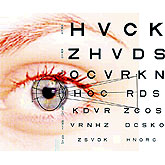Excerpts from AME Guide |
 |
Aerospace Medical Dispositions
Item 52. Color Vision
An applicant does not meet the color vision standard if testing reveals:- All Classes
- Seven or more errors on plates 1-15 of the AOC (1965 edition) pseudoisochromatic plates.
- AOC-HRR (second edition): Any error in test plates 7-11. Because the first 4 plates in the test book are for demonstration only, test plate 7 is actually the eleventh plate in the book. (See instruction booklet.)
- Seven or more errors on plates 1-15 of Dvorine pseudoisochromatic plates (second edition, 15 plates.)
- Six or more errors on plates 1-11 of the concise 14-plate edition of the Ishihara pseudoisochromatic plates. Seven or more errors on plates 1-15 of the 24-plate edition of Ishihara pseudoisochromatic plates. Nine or more errors on plates 1-21 of the 38-plate edition of Ishihara pseudoisochromatic plates.
- Seven or more errors on plates 1-15 of the Richmond (1983 edition) pseudoisochromatic plates.
- Farnsworth Lantern test: An average of more than one error per series of nine color pairs in series 2 and 3. (See instruction booklet.)
- Any errors in the six plates of the Titmus Vision Tester, the Titmus II Vision Tester, the Titmus 2 Vision Tester, the OPTEC 2000 Vision Tester, the OPTEC 900 Vision Tester the Keystone Orthoscope, or Keystone Telebinocular.
- LKC Technologies, Inc., APT-5 Color Vision Tester. The letter must be correctly identified in at least two of the three presentations of each test condition. (See APT-5 screening chart for FAA-related testing in instruction booklet.)
- Certificate Limitation. If an applicant fails to meet the color vision standard as interpreted above but is otherwise qualified, the AME may issue a medical certificate bearing the limitation:
NOT VALID FOR NIGHT FLYING OR BY COLOR SIGNAL CONTROL - Special Issuance of Medical Certificates. An applicant who holds a medical certificate bearing a color vision limitation may request a signal light test. This request should be in writing and should be directed to the AMCD or RFS. If the applicant passes the signal light test, the FAA will issue a medical certificate without the color vision limitation and provide the applicant with a “letter of evidence.” The signal light test may be given at any time during flight training.
- Color Vision Correcting Lens (e.g. X-Chrom). Such lens are unacceptable to the FAA as a means for correcting a pilot's color vision deficiencies.
- Yarn Test. Yarn tests are not acceptable methods of testing for the FAA medical certificate.
Note: Numbers correspond to the required entry in the AME portion of the FAA Form 8500-8
Note: Numbers correspond to the required entry in the AME portion of the FAA Form 8500-8
